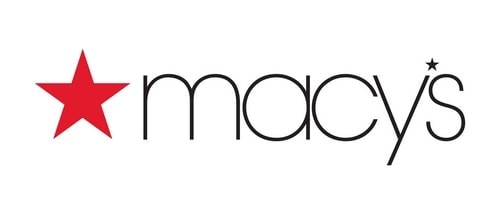The Marketing mix of Macy’s analyses the 4Ps of Macy’s, including the Product, Price, Place, and Promotion of Macy’s. Macy’s Inc. is a holding company of American origins. It is the owner company of department outlets Bloomingdale’s and Macy’s and of a chain of spas, stores, and beauty products titled Bluemercury. This public company is associated with the lifestyle and retail industry and was founded in 1929. Macy’s Inc. has been ranked first as the largest retailer of fashion goods and 36th as the most significant overall retailer globally. Its competitors are as follows-
- Kohl’s
- Lotte Shopping
- Aeon
- C. Penney
- Neiman Marcus
About Macy’s
- Type: Department store
- Industry: Retail
- Founded: October 28, 1858
- Founder: Rowland Hussey Macy
- Headquarters: New York City, New York, United States
- Area served: United States
- Key people: Jeff Gennette (Chairman) and (CEO)
- Number of employees: 130,000
Table of Contents
Macy’s Product Strategy
Macy’s Inc. is a department store with various products for every age group, from several brands like Adidas, Nike, Ralph Lauren, Levi’s, and Calvin Klein. Its diversified product portfolio includes
- Home Essentials include kitchenware like cutlery, cookware kitchen gadgets, types of furniture like couches, tables, sofas, and chairs, cleaning items, and gourmet food like chocolates and desserts
- Bed and bath products, including comforters, quilts, sheets, blankets, bathroom accessories, bath towels, linens, beach towels, pillows, and mattress
- Products for women include maternity clothes, dresses, sweaters, tops, swimwear, suits, shorts, leggings, rompers, jeans, jackets, innerwear, activewear, footwear, jewelry, watches, hats, gloves, and handbags
- Products for men include casual shirts, jeans, pants, hoodies, tuxedos, undershirts, polos, suits, sweaters, t-shirts, formalwear, boots, designer shoes, sneakers, watches, belts, backpacks, gloves, wallets and ties
- The kids section includes activewear, coats, jeans, dresses, tees, socks, shoes, pajamas, coats, innerwear, shirts, pants, shorts, skirts, sweaters, tops, jackets, games, gloves, backpacks, toys, scarves, and hats
Macy’s, a prominent American department store chain, offers a diverse range of products that cater to various consumer needs.
The product mix of Macy’s in 2023 is as follows (Source)
- Clothing and Apparel: Macy’s offers a wide selection of clothing for men, women, and children. This includes everyday wear, formal attire, activewear, and outerwear from various brands and designers.
- Accessories: The store features a variety of accessories like handbags, belts, scarves, hats, and sunglasses from several well-known brands.
- Footwear: Macy’s has a comprehensive shoe section for all occasions, including casual, formal, sports, and specialty footwear.
- Beauty Products and Fragrances: The beauty section includes cosmetics, skincare products, and fragrances from various high-end and affordable brands.
- Jewelry and Watches: Macy’s offers a selection of fine jewelry, including rings, necklaces, earrings, and bracelets, as well as a variety of watches for both men and women.
- Home Goods and Furniture: Their product range extends to home furnishings and decor, including bedding, kitchenware, small appliances, and furniture.
- Electronics: Macy’s also carries limited consumer electronics, like smartwatches and other wearable tech.
- Seasonal and Holiday Items: Depending on the season or upcoming holidays, Macy’s stocks related items, like Christmas decorations during the holiday season or swimwear in the summer.
- Gifts and Specialty Products: The store also offers a range of gift items and specialty products that vary throughout the year.
Please note that the availability of these products can vary based on location, current market trends, and Macy’s specific strategies. For the most current and specific product offerings, visiting Macy’s official website or a physical store is best.
Macy’s Place Strategy
Macy’s Inc. has spread its operations to forty-five states in the United States, Puerto Rico, and Guam, with nearly eight hundred eighty-five stores by July 2015. Macy’s has been divided into several subdivisions for easy and efficient handling.
Macy’s North has its headquarters based in Minnesota; Macy’s South and Central has more than 136 stores with its headquarters based in Atlanta; Macy’s East has nearly 216 outlets with its headquarters and distribution based in New York City; Macy’s Midwest has 95 outlets with its base at Missouri, Macy’s Florida has 61 outlets, Macy’s Northwest has nearly 71 stores with headquarters base at Seattle. Macy’s West has its headquarters based in San Francisco with 232 outlets.
Macy’s flagship stores are also located in Paris and Dubai. Macy’s has a strong distribution channel, including corporate offices, fully-owned and partially-owned and leased stores, and an efficient logistic network. It is served by an efficient workforce that includes services of nearly 157,900 employees. It has become an e-commerce company by selling its products online to almost one hundred countries.
Macy’s place strategy is as follows:
- Nationwide Store Presence: Macy’s operates numerous physical stores across the United States, ensuring widespread customer accessibility in various regions.
- Strategic Location Selection: The stores are often located in high-traffic areas such as city centers, malls, and famous shopping districts, maximizing visibility and customer footfall.
- Online Platform: Macy’s complements its physical stores with a robust online platform, offering a wide range of products for customers who prefer shopping digitally.
- Omnichannel Experience: Macy’s integrates its online and offline presence, allowing customers to seamlessly shop, return, and exchange products across both channels.
- Focus on Key Markets: While Macy’s has a wide presence, it strategically focuses on key markets and metropolitan areas with higher consumer spending, tailoring its offerings to the preferences of local demographics.
Macy’s Pricing Strategy
At the end of the financial year 2015, Macy’s Inc declared its estimated revenues at 27.079 billion dollars and its net income at 1.072 billion dollars. It has targeted the middle and upper-middle class sections of society as its target customers at its mid-range outlets.
Macy’s has adopted a reasonable pricing policy and has kept product prices affordable and pocket-friendly. It has also adopted a promotional pricing plan for its online stores. It offers several incentives to its customers to purchase more, like constant sales, clearance sales, periodic sales, festive sales, deals of the day, discounts, and coupons.
Macy’s pricing strategy is a sophisticated blend of pricing decisions and various approaches designed to cater to a diverse customer base while remaining competitive in the dynamic retail market. Here’s a breakdown:
- Market Penetration Pricing: Macy’s often employs market penetration pricing for new product lines or brands, setting lower initial prices to attract customers and gain market share quickly. This approach particularly effectively introduces new products to the competitive retail market.
- Promotional Pricing and Discounts: A significant and critical aspect of Macy’s pricing strategy is the frequent use of sales, discounts, and promotions. These tactics drive traffic and sales and help clear inventory, making room for new stock.
- Dynamic Pricing: Leveraging advanced analytics and customer data, Macy’s employs dynamic pricing, where prices vary based on demand, inventory levels, and consumer buying trends. This same price flexibility allows Macy’s to adjust prices in real-time to optimize sales and profits.
- Psychological Pricing: Macy’s often uses psychological pricing strategies, like pricing items slightly below a round number (e.g., $19.99 instead of $20). This approach is designed to have retailers make prices appear lower and more attractive to customers.
- Value-Based Pricing for Premium Products: Macy’s adopts a value-based pricing approach for high-end products, where the prices reflect the product’s perceived value. This cost-based pricing strategy targets consumers willing to pay more for premium brands, quality, and exclusivity.
Through these diverse pricing strategies, Macy’s effectively caters to a broad spectrum of consumers, from budget-conscious shoppers to those seeking premium products, thus maintaining its competitive edge in the retail industry.
Macy’s Promotion Strategy
Macy’s has adopted an intensive marketing strategy and has launched several ad campaigns through print and electronic media on radio, television, magazines, and newspapers. It has utilized social media to gain maximum advantage and has spread its brand awareness via its website and other platforms, including Facebook, Twitter, and YouTube.
It offers store catalogs so that the customers know every product and incentives like several deals, discounts, and offers as part of its promotional and marketing strategy. Macy’s offers its loyal customers information through personalized emails. It also participates in an annual Thanksgiving parade to increase its brand visibility. A loyalty program was launched that provided considerable benefits to its largest customers, and the company even issued nearly 14 million credit cards, resulting in additional savings.
“Macy’s marketing and promotion strategy is as follows:
- Extensive Use of Sales and Discounts: Macy’s frequently employs sales events, discounts, and special offers to attract customers and boost purchases, especially during crucial shopping seasons and holidays.
- Multi-Channel Marketing: The company utilizes a multi-channel marketing approach, including digital advertising, email marketing, social media campaigns, and traditional media, to reach a broad audience.
- Loyalty Programs and Partnerships: Macy’s offers loyalty programs and collaborates with various brands and influencers to enhance customer engagement, convenience, and brand loyalty, encouraging repeat business and customer retention.
Some Recent Video ads and Print ads of Macy’s are:
https://youtu.be/VlxVmIYFsiE
Liked this post? Check out the complete series on Marketing Mix

